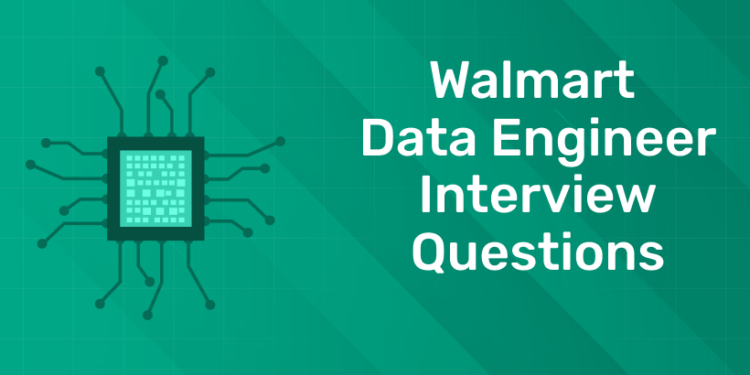Table of Contents
Walmart, one of the largest multinational retail giants, heavily relies on data to enhance its operations and deliver value to customers. As a result, the role of a data engineer at Walmart is both critical and highly sought after. If you’re preparing for a data engineering position at Walmart, you might wonder what kind of questions to expect and how to showcase your technical expertise, problem-solving skills, and domain knowledge. This blog serves as a comprehensive guide, covering common Walmart data engineer interview questions, including technical queries, real-world case scenarios, and behavioral challenges.
Enhance your data science skills with us! Join our free demo today!
Why Join Walmart?
Joining Walmart offers a unique opportunity to be part of one of the world’s largest and most influential companies. Here are some compelling reasons to consider:
1. Impact at Scale
Walmart serves millions of customers daily across the globe. As a data engineer, your work will directly influence the operations of a retail giant and impact customer experiences on a massive scale.
2. Data-Driven Innovation
Walmart leverages cutting-edge technologies like AI, machine learning, big data, and cloud computing to optimize supply chain management, improve customer insights, and enhance decision-making. It’s an ideal environment for tech enthusiasts passionate about innovation.
3. Career Growth and Learning
Walmart provides excellent career development opportunities, from internal training programs to exposure to diverse projects. Employees are encouraged to grow professionally, develop new skills, and explore career paths within the organization.
4. Global Presence
With operations in multiple countries, Walmart offers opportunities to work in a dynamic, multicultural environment and collaborate with global teams.
5. Competitive Compensation and Benefits
Walmart provides competitive salaries, bonuses, stock options, healthcare benefits, and perks like employee discounts and wellness programs.
6. Real-World Challenges
Working at Walmart means solving real-world problems at scale, such as managing inventory for thousands of stores, optimizing supply chains, or ensuring a seamless e-commerce experience. It’s a great place for engineers who thrive on tackling complex challenges.
Walmart Data Engineer Interview Questions and Answers
1: Which of the following algorithms is most suitable for classification tasks?
Here are some commonly asked questions during a Walmart data engineer interview, along with sample answers to guide your preparation:
Technical Questions
1. What is the difference between ETL and ELT?
ETL (Extract, Transform, Load): Data is extracted from the source, transformed into the desired format, and then loaded into the target system.
ELT (Extract, Load, Transform): Data is extracted and directly loaded into the target system, where transformations are applied later, often leveraging the target system’s computational power.
Walmart may prefer ELT for handling large datasets in modern systems like Hadoop or cloud-based platforms.
2. How do you optimize SQL queries for large datasets?
- Use indexing to speed up search operations.
- Avoid SELECT * and only query necessary columns.
- Use partitioning for large tables to reduce search space.
- Analyze and rewrite subqueries as joins where applicable.
- Use database-specific tools like EXPLAIN to analyze query execution plans.
3. Explain how you would design a data pipeline for Walmart’s inventory system.
- Ingestion Layer: Use tools like Kafka or Kinesis for real-time data ingestion from stores and warehouses.
- Processing Layer: Utilize Spark or Flink for data transformation and cleansing.
- Storage Layer: Store data in a scalable system like HDFS, Amazon S3, or Snowflake.
- Analytics Layer: Use Redshift or BigQuery for reporting and analytics.
- Ensure fault tolerance, data validation, and real-time monitoring.
4. What is the purpose of partitioning in Hadoop or Spark?
Partitioning divides data into smaller, manageable chunks, improving processing speed and efficiency. It ensures distributed processing across nodes, reduces shuffling, and optimizes performance for big data jobs.
5. How do you ensure data quality in large-scale data pipelines?
- Perform schema validation to detect inconsistencies.
- Use deduplication techniques to avoid duplicate data.
- Implement error handling and logging for tracking issues.
- Conduct unit testing on data transformations.
- Monitor data pipelines using tools like Airflow or Datadog.
Behavioral Questions
1. Tell me about a time you optimized a slow data pipeline.
Discuss a specific scenario where you identified bottlenecks, such as inefficient joins or unnecessary transformations, and how you resolved them using optimization techniques. Share the impact, such as reduced processing time or improved throughput.
2. How do you handle conflicting priorities in a data engineering project?
I prioritize tasks based on their impact on business outcomes and urgency. I ensure transparency by communicating with stakeholders, setting realistic deadlines, and using tools like Jira to track progress.
3. How do you collaborate with data scientists and analysts?
I ensure seamless communication by understanding their requirements and designing pipelines that provide clean, well-structured, and timely data. Regular check-ins and feedback loops ensure alignment throughout the project.
Scenario-Based Questions
1. If a Walmart store’s sales data is missing from the daily report, how would you troubleshoot the issue?
- Check the data pipeline logs for errors.
- Verify if the source system successfully transmitted the data.
- Inspect intermediate processing steps for failures.
- If the issue is identified, reprocess or backfill the missing data.
- Implement measures to prevent future occurrences, like better monitoring or retries.
2. How would you handle a sudden spike in data volume during a Walmart holiday sale?
- Use autoscaling features in cloud systems to handle increased loads.
- Partition data for parallel processing.
- Leverage caching mechanisms for frequently accessed data.
- Optimize storage and processing to handle peak loads effectively.
These questions test both your technical expertise and your ability to adapt to Walmart’s fast-paced, data-driven environment. Tailor your responses based on your experience and the role requirements to leave a lasting impression.
Conclusion
By joining Walmart, you’ll contribute to shaping the future of retail while advancing your career in one of the most dynamic and impactful companies in the world. Walmart offers a unique opportunity to work on large-scale, impactful projects that shape the future of retail and technology. For data engineers, it’s a chance to tackle complex challenges, leverage cutting-edge tools, and contribute to a data-driven organization that serves millions of customers globally.
Joining Walmart isn’t just about building a career—it’s about being part of a mission to deliver better customer experiences and create a positive societal impact. It’s a journey worth pursuing.
Enhance your data science skills with us! Join our free demo today!












